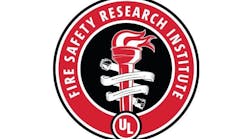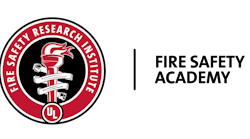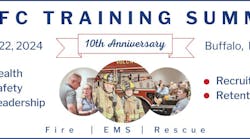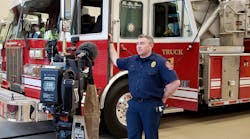An Amazing Day At FDNY Rescue 2
On the 10th anniversary of 9/11, my husband and I were privileged to sit among the bravest men, their wives and children that anyone would ever want to encounter. Our nephew, Firefighter Duane R. Wood, is among these men, who only can be called New York City’s Bravest.
A memorial service for the fallen heroes of the World Trade Center was held in a small firehouse in the center of Brooklyn’s Bedford-Stuyvesant neighborhood. It is a 25-by-90-foot, two-story building on a 25-by-117-foot lot. The building was built in 1921. It was one of 14 similarly constructed buildings, all with ornate wrought-iron railings on the roof. It originally housed horses.
This building now houses Rescue 2, FDNY, since July 1985. Being built in 1921, one can see the ravages of time with the old plaster walls and the creaky wooden staircase that leads to the second floor. There were no fancy ceremonial banners and pristine surroundings to impress dignitaries. There was nothing fancy here. Only lockers with firefighters’ gear, apparatus used in fighting fires and a huge diesel gas pump for fueling the fire truck. Mounted on one wall was an old roster board with names written in chalk of the eight men lost from Rescue 2 on that fateful day 10 years ago. I read the names one by one:
Deputy Chief Raymond Downey
Lieutenant Peter Martin
Firefighter William Lake
Firefighter Daniel Libretti
Firefighter John Napolitano
Firefighter Lincoln Quappe
Firefighter Kevin O’Rourke
Firefighter Edward Rall
As I sat there, I was amazed at the feeling in this building. One didn’t notice the surroundings, only the incredible warmth that was ever present. The camaraderie of the men who work here every day risking their lives for others. Looking around at all the men, all I could see was a spirit like no other on their faces – a determined spirit that only one of their own could know. They love who they are and what they stand for. They are firefighters, plain and simple. Their pride was brimming over in each handshake and smile to each other as well as the guests who were present.
After the Mass service in the firehouse, there was a buffet brunch waiting outside in the lot next to the building. The lot had large steel containers and tight wire ropes where the firefighters do some of their training. There were round tables with red-and-white canopies set up in case of rain. A few drops of rain started to fall, but the sky held the rain back so this affair could continue in comfort.
As we sat chatting with each other, a loud bell would sound and you could hear orders coming from command that some of the men were needed elsewhere. Dressed in full gear, these men automatically jumped into the fire truck and were off, leaving their plates of food behind.
Among the guests were firefighters from all over the country – Chicago, Dallas, Milwaukee and as far away as Australia – to mention a few. This was truly a day of firefighters, not politicians, media or the like. We were also more than privileged to be in the company of three Navy SEALS, whose bravery and courage are what keeps us all safe in the darkest hours. As I looked at them, I could only remember their own tragedy that just happened on Aug. 6, when 22 Navy SEALS were killed along with other U.S. military personnel when their helicopter was gunned down by Taliban forces in Afghanistan.
I walked over and shook hands with one of the SEALS and thanked him for his service. In that handshake, I could feel the steadfast resolve that makes the United States of America strong and unshakeable. I looked across at his wife and we exchanged smiles. I could see the pride on her face. I went back to the table where I was sitting and then in a few short minutes, that Navy SEAL in his black dress officer’s uniform had his young son hoisted on his shoulders with all the care that only a dad can do. It was almost impossible to hold back tears at that moment.
I am not a writer, but I felt compelled to write this story to express to our nephew, Duane, his amazing wife, Alethea, their children, Briana, Kayla and Sean, and to all the wives and children of these the bravest of men my wholehearted thanks and admiration for their unselfish service. This is a day that will remain in my heart and memory for the rest of my life.
Clare Gulbrandsen-Velez
Brooklyn, NY
Editor’s note: More than 200 people attended the Mass in the small, single-door firehouse on Bergen Street in the Crown Heights section of Brooklyn, spilling out onto the apron and into the street.
“Integrated Tactical Accountability”
In Mark Emery’s August 2011 article, “Integrated Tactical Accountability: Part 3 – Why We Can’t Let Anybody Fall Through the Cracks,” he has some discussion (page 92) related to Divisions and Groups. As he correctly notes at the beginning of this discussion, NIMS (National Incident Management System) ICS (Incident Command System) defines Divisions as having responsibility for a geographic area while Groups are assigned specific functions. He then goes, in my opinion, astray with his change of the concept to define the responsibilities as assignment of objectives.
What he misses here is that in all cases, the incident commander (IC) is to define the specific objectives to be accomplished and do this by the use of effective strategies and tactics. An objective will require a minimum of one strategy and one tactic. During major incidents, an objective may require several strategies and multiple tactical assignments.
Tactical response to an incident is carried out through Divisions and Groups when they are used (remember, an IC can use a Task Force, Strike Team or Single Resource to accomplish tactics). As I noted above, the tactics fall after the IC has determined the incident objectives and strategies. An IC can be quite successful if he/she remembers that once the objectives are set then strategies must be determined. RECEOVS has served us well for decades and continues to do so; no need to invent new acronyms when this one guides us quite effectively.
So what happens in that Division? As an example, let’s say that a fire has occurred on the second floor of a two-story residential structure. The initial IC (normally the first-arriving company officer) must quickly determine the objectives (life safety, incident stabilization and property conservation – LIPs – and in what order they will be accomplished) and in this case, the objectives might be as simple as remove all occupants and put the fire out. Converting those objectives to strategies might find the IC selecting rescue, confine, extinguish and ventilation (yes, there is more work to be accomplished, but the next arriving commander will handle the expansion).
With recognition that the initial response might bring two or three engines and a special service (truck/heavy rescue), the initial IC may well assign an engine company officer as the Division 2 supervisor with the two engines and special service to conduct operations in the example given. As the Division 2 supervisor with knowledge of the objectives specific tactical assignments will be made to accomplish the strategies; i.e., personnel will be assigned to conduct a primary search (rescue), extinguish the fire (confine and extinguish) and clear the area of smoke and fire gases (ventilation). Hopefully, during the size-up, the initial IC would have called for additional resources, if required.
The next-arriving command-level officer, following an exchange of command, will need to ensure that additional objectives are developed (if needed), strategies and tactics determined and the appropriate assignments made. This IC may well want to assign a Group to handle functional requirements such as ventilation, water supply, salvage, etc.
As an incident expands, it’s the responsibility of the IC to ensure that an adequate organization exists. This is where Branches might be implemented to provide for an appropriate span of control. The IC will need to use logic in assigning Divisions and Groups to the appropriate Branch Director.
If a fire department trains in command competencies at all levels and the IC provides for strong leadership through an appropriate organization (the assignment of the proper organization elements), he/she will eliminate the freelancing Mr. Emery cites.
Roger A. McGary
Fire Chief
Silver Spring Fire Dept.
Silver Spring, MD
Mark Emery responds: I appreciate Chief McGary’s comments regarding my August 2011 article. Regarding RECEOVS, he is correct, that acronym has served well for decades. However, Lloyd Layman identified many more objectives than the Layman-based acronym represents. RECEOVS is not a menu or script; the acronym represents a handful of objectives (not methods) for addressing problems identified during size-up. RECEOVS has limited value because there are important tactical omissions.
For example, where is primary search (PS)? Rescue, search and rescue, and primary search are not synonymous terms nor objectives. Each term addresses a specific life-safety situation as determined by focused size-up. On the contemporary fireground, primary search is conducted as part of a two-in/two-out-compliant offensive operation.
Where is water supply (WS)? The letter V does not address the method of ventilation (OVV, DVV, PPV, HV), which is why I developed my status board shorthand information sheet.
I encourage Chief McGary to read part two, page 80, in the July 2011 issue of Firehouse® (part one was published in the February 2011 issue). I believe the chief would concur with my “operational congruency” model for ensuring that all actions begin with problem identification (also on page 80 of the July 2011 issue). RECEOVS starts in the middle of my operational congruency model.
Providing “strong leadership” and “appropriate organization” does not articulate a structured, systematic and consistent process for managing strategy, resources and risk (let alone for eliminating freelancing). ITAC provides a specific ICS implementation methodology that includes strategic tools that ensure tactical accountability is achieved and maintained throughout the course of any incident of any size.
To access parts one and two of “Integrated Tactical Accountability,” navigate to: www.imsalliance.com/ITAC, then click “ITAC Articles” on the right side of your browser.
“Our Culture Is Sick”
I felt the need to comment on the excellent article by Daniel Byrne, “Our Culture Is Sick,” in the September issue of Firehouse®. Very rarely do I take the time to comment on articles I read, but I believe Daniel has stated the case for strong fire prevention and fire safety education in a very forthright, positive and realistic manner.
I have been a firefighter for over 26 years, in suppression and currently in education and, as most firefighters have, personally experienced the ugliness of uncontrolled fires that kill and destroy. Unfortunately, most of those fires and related deaths could have been prevented if the citizens we are trying to protect knew more about and practiced basic fire safety concepts. How many times do we need to pull dead bodies out of burning houses before we start to realize there has to be a better way?
Once smoke alarms became a legal requirement in residences, we saw a dramatic drop in fire deaths, but people seem to forget the smoke alarm is only one part of fire safety. How about this novel concept – let’s practice fire prevention and safety education daily and never have the fire to start with!
It is difficult enough as firefighters to deal with the needless death or serious injury of a child or adult in a fire that should never have occurred, but what about those departments that have lost firefighters in that fire? As Daniel so succinctly stated, “we have warped the once noble culture of ‘brotherhood’ ” into something it was not intended to be by constantly exposing ourselves to unnecessary risks to fulfill it.” Our “brotherhood” shows itself grandly at firefighters’ funerals, but why can’t that same “brotherhood” become active every day and help prevent that unnecessary fire that may take our “brother” or “sister’s” life? With every fire department in every community under financial scrutiny it seems the first thing thrown out of the budget is prevention and education.
I am in no way saying that firefighter training, gear and equipment should not continue to be a strong priority in our budgets, but it is my belief that the fire departments that are going to prosper in this current climate are going to be the ones that prove to their community and their politicians that education and prevention can save everyone not only money, but more importantly, lives. Isn’t the main mission of every fire department “saving lives and protecting property”?
If we in the fire service want our community leaders to support us, it’s time that the leaders (and we are all leaders) within our fire departments step up and take a strong stance for fire prevention and fire safety education. This stance, however, should not be just for our community, but within our own departments. Firefighter training needs to cover every facet of firefighting, and prevention/education is just as important as every other aspect.
I am fortunate that I am a member of a fire department that values prevention and education and commits firefighters full time to that position. I also realize that many departments are having trouble keeping enough manpower to barely accomplish the minimum required in their community. If for no other reason than that, every firefighter in every department should become more proactive regarding the prevention/education issue. All firefighters are looked upon with respect by everyone we protect, so let’s earn it by helping them be safe, which ultimately protects all of us. Isn’t that what true “brotherhood” is all about? Thanks!
Captain Dave Meadows
Safety Education Division
Fort Wayne Fire Department
Fort Wayne, IN





